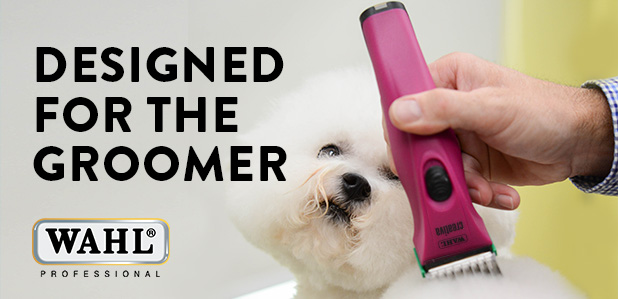By: The Andis Company
Clipper blades are an integral part of our everyday life as a pet stylist. The decision on which blade to use is dependent on multiple factors: the type of coat, what kind of condition the coat is in, and the type of trim the client is requesting for their dog. It is also helpful to first evaluate the coat and determine if any structural faults need to be corrected by creating more angulation. Choosing the right blade for the job is essential to meet the client’s expectations and have their dog looking it’s best.
Ceramic vs. Steel Cutting Blades
Many professional groomers invest in a combination of both ceramic and steel blades to ensure they have the right tools for any coat type. There are some specific advantages for each blade type, but it often comes down to personal preference. A ceramic cutting blade will never rust and will stay sharper longer. During use, ceramic blades stay up to 75% cooler than steel. A cooler cutting blade is extra helpful when you might be taking longer to groom, especially on larger dogs. Steel blades are generally less expensive, more durable, and overall easier to maintain. They also have a special coating that helps them to resist corrosion.
Blade Lengths
Blades are available in a variety of different lengths and tooth patterns to help achieve different trim styles and different coat lengths. The number on the blade indicates what length of coat will be left on the animal. The higher the blade number, the shorter the coat length. For example, a #10 blade will leave the coat shorter than a #4 blade. Blades are available for lengths ranging from #50SS with a 1/125” length (shortest) to #3/4HT with a 3/4″ length (longest).
Clipping With or Against the Grain
Traditionally, groomers clip with the grain of the coat. Clipping against the grain, leaves the coat up to two blade lengths shorter than clipping with the grain. However, clipping against the grain can be beneficial to eliminate track marks. If you want to show off angulation, create more angulation, or even add some pizzazz to a trim, clipping against the grain in key areas is a quick and easy way to do so. Whether you are clipping with or against the grain, it is important to remember to always follow the natural lay of the coat.
Maintaining your Blades
To keep your blades cutting smoothly and prolong the life of your blades and the clipper itself, it is also important to remember to perform proper maintenance. Before cleaning the blade, remove any debris with a soft nylon bristle brush. Next, pour a capful of Andis Blade Care Plus into a shallow bowl, and with the clipper running, dip just the teeth of the blade in the solution for 8-10 seconds and then wipe with a clean cloth. This will de-gunk the blade as well as help keep it lubricated, disinfected, deodorized, and prevent rust. After cleaning, it is important to oil your blade. To optimize performance, use the 5-point oiling system for the blade. With your clipper blade pointing down, apply 3 drops of Andis Clipper Blade Oil across the blade’s teeth, then 1 drop at each back rail. Let the clipper run for 10 seconds to help distribute the oil throughout the blade. Wipe away any excess with a clean cloth. If you are cleaning and oiling your blade regularly, it will extend the life of the blade. When the blade starts dragging and tugging at the coat, it’s time to call Andis and send your blades in to be sharpened.
Swapping Cutters
Maintaining sharp blades on your clippers is essential for efficient and safe grooming, and swapping out a dull cutter is a simple solution. Instead of replacing an entire blade or sending it out for sharpening, having extra cutter blades on hand offers a more cost-effective and convenient option to keep your clippers performing at their best. With just a few basic steps, you can replace the cutter yourself in minutes. Andis carries a wide variety of cutters that fit both standard and wide blade clippers, ranging from ultra fine-tooth all the way up to medium and coarse cutters. Find your perfect match at andis.com!
For a step-by-step guide, watch a tutorial on how to swap out your cutter blade here: https://vimeo.com/1014535161
https://www.animalbehaviorcollege.com/blog/paw-prints/all-about-blades-2024/




